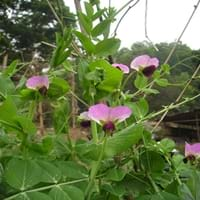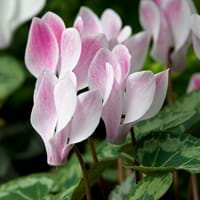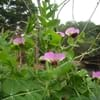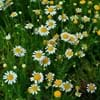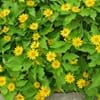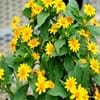Life Span
Annual
Perennial
Type
Flowering Plants
Flowering Plants, Tubers
Origin
Mediterranean
Europe, Mediterranean Basin, Middle East, North Africa, Somalia
Types
Not Available
Cyclamen Africanum, Cyclamen Alpinum, Cyclamen Cilicium, Cyclamen Coum
Number of Varieties
Not Available
Habitat
Cultivated Beds
Alpine Meadows, Rocky areas, Woods
USDA Hardiness Zone
9-10
5-9
Sunset Zone
A1, A2, A3, H1, H2, 1a, 1b, 2a, 2b, 3a, 3b, 4, 5, 6, 7, 8, 9, 10, 11, 12, 13, 14, 15, 16, 17, 18, 19, 20, 21, 22, 23, 24
15, 16, 17, 18, 19, 20, 21, 22, 23, 24
Habit
Vining/Climbing
Clump-Forming
Minimum Width
Not Available
Flower Color
White, Red, Blue, Purple, Pink, Rose, Salmon, Coral, Lavender, Blue Violet
Pink, Purple, White
Flower Color Modifier
Bicolor
Not Available
Fruit Color
Green, Tan
Brown
Leaf Color in Spring
Green, Sea Green
Several shades of Green
Leaf Color in Summer
Green, Sea Green
Not Available
Leaf Color in Fall
Green, Sea Green
Green, Silver
Leaf Color in Winter
Light Green
Green, Silver
Leaf Shape
Pinnate
Heart-shaped
Plant Season
Spring, Summer, Fall, Winter
Autumn, Spring, Summer, Winter
Sunlight
Full Sun
Indirect sunlight
Type of Soil
Loam
Clay, Sandy, Well drained
The pH of Soil
Acidic, Neutral
Acidic
Soil Drainage
Well drained
Well drained
Bloom Time
Indeterminate
Autumn, Spring, Summer
Tolerances
Drought
Not Available
Where to Plant?
Container, Ground
Container, Ground, Pot
How to Plant?
Seedlings
From bulbs, Seedlings
Plant Maintenance
Medium
Medium
Watering Requirements
Requires regular watering
Do not water frequently, It cannot sustain wet-feet, Keep the ground moist but not water-logged, Prefer drip-irrigation instead of Over-head watering, Water when soil is dry
In Summer
Lots of watering
Lots of watering
In Spring
Moderate
Moderate
In Winter
Average Water
Average Water
Soil pH
Acidic, Neutral
Acidic
Soil Type
Loam
Clay, Sandy, Well drained
Soil Drainage Capacity
Well drained
Well drained
Sun Exposure
Full Sun
Indirect sunlight
Pruning
Cut or pinch the stems, Pinching, Shearing
Cut or pinch the stems, Prune if you want to improve plant shape, Prune ocassionally, Prune to control growth, Prune when plant is dormant, Remove dead leaves, Remove dead or diseased plant parts
Fertilizers
Organic Flower Fertilizer
All-Purpose Liquid Fertilizer
Pests and Diseases
Aphids, Mildew, Mosaic viruses
Aphids, Botrytis Cinerea, Gray mold, Mice, Mites, Root weevil, Slugs, Snails, Squirrels
Plant Tolerance
Drought
Drought
Flower Petal Number
Single
Single
Foliage Texture
Medium
Medium
Foliage Sheen
Matte
Matte
Attracts
Caterpillar, Insects, Not Available, Snails
Not Available
Allergy
Diarrhea, Dizziness, Mouth itching, Stomach pain, Vomiting
Respiratory problems
Aesthetic Uses
Cottage Garden, Ground Cover
Showy Purposes
Beauty Benefits
Not Available
Not Available
Environmental Uses
Fixes Nitrogen
Air purification
Medicinal Uses
Not Available
Digestive disorders, Menstrual Disorders
Part of Plant Used
Flowers
Root, Stem
Other Uses
Used as essential oil
Showy Purposes, Used as an ointment
Used As Indoor Plant
Yes
Yes
Used As Outdoor Plant
Yes
Yes
Garden Design
Cottage garden, Groundcover
Not Available
Botanical Name
LATHYRUS odoratus
Cyclamen Persicum
Common Name
Sweetpea
Cyclamen or Florist's Cyclamen
In Hindi
Sweetpea
Sikalemen
In German
Sweetpea
Zyklamen
In French
Sweetpea
Cyclamen
In Spanish
Sweetpea
Ciclamen
In Greek
Sweetpea
κυκλάμινο
In Portuguese
Sweetpea
Cíclame
In Polish
Sweetpea
Cyklamen
In Latin
Sweetpea
Cyclamīnos
Phylum
Magnoliophyta
Anthophyta
Class
Magnoliopsida
Dicotyledonae
Family
Fabaceae
Primulaceae
Genus
Lagerstroemia
Cyclamen
Clade
Angiosperms, Eudicots, Rosids
Not Available
Tribe
Vicieae
Cyclamineae
Subfamily
Faboideae
Myrsinoideae
Number of Species
Not Available
Properties of Sweetpea and Cyclamen
Wondering what are the properties of Sweetpea and Cyclamen? We provide you with everything About Sweetpea and Cyclamen. Sweetpea doesn't have thorns and Cyclamen doesn't have thorns. Also Sweetpea does not have fragrant flowers. Sweetpea has allergic reactions like Diarrhea, Dizziness, Mouth itching, Stomach pain and Vomiting and Cyclamen has allergic reactions like Diarrhea, Dizziness, Mouth itching, Stomach pain and Vomiting. Compare all the properties and characteristics of these two plants. Find out which of these plant can be used as indoor plant. If you are interested to decorate your house and garden, find out aesthetic uses, compare them and select the plant which will beautify your surrounding. Along with beautification, try comparing medicinal and edible uses of Sweetpea and Cyclamen and you can choose the plant having best and most benefits.
Season and Care of Sweetpea and Cyclamen
Season and care of Sweetpea and Cyclamen is important to know. While considering everything about Sweetpea and Cyclamen Care, growing season is an essential factor. Sweetpea season is Spring, Summer, Fall and Winter and Cyclamen season is Spring, Summer, Fall and Winter. The type of soil for Sweetpea is Loam and for Cyclamen is Clay, Sandy, Well drained while the PH of soil for Sweetpea is Acidic, Neutral and for Cyclamen is Acidic.
Sweetpea and Cyclamen Physical Information
Sweetpea and Cyclamen physical information is very important for comparison. Sweetpea height is 180.00 cm and width Not Available whereas Cyclamen height is 0.54 cm and width 0.75 cm. The color specification of Sweetpea and Cyclamen are as follows:
Sweetpea flower color: White, Red, Blue, Purple, Pink, Rose, Salmon, Coral, Lavender and Blue Violet
Sweetpea leaf color: Green and Sea Green
Cyclamen flower color: Pink, Purple and White
- Cyclamen leaf color: Several shades of Green
Care of Sweetpea and Cyclamen
Care of Sweetpea and Cyclamen include pruning, fertilizers, watering etc. Sweetpea pruning is done Cut or pinch the stems, Pinching and Shearing and Cyclamen pruning is done Cut or pinch the stems, Prune if you want to improve plant shape, Prune ocassionally, Prune to control growth, Prune when plant is dormant, Remove dead leaves and Remove dead or diseased plant parts. In summer Sweetpea needs Lots of watering and in winter, it needs Average Water. Whereas, in summer Cyclamen needs Lots of watering and in winter, it needs Average Water.
